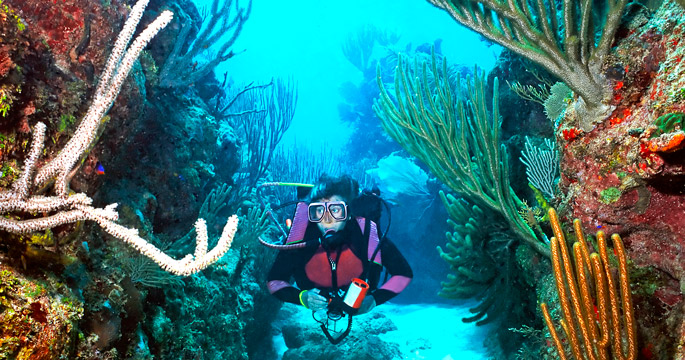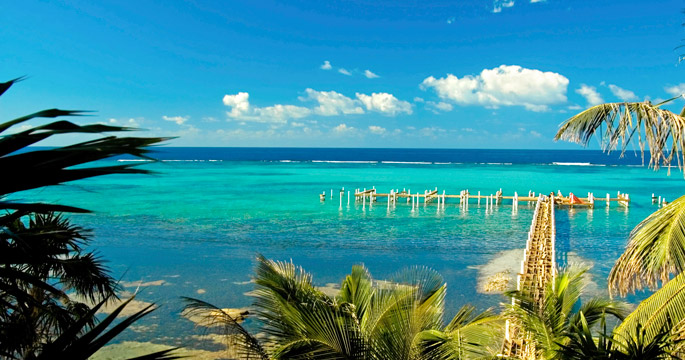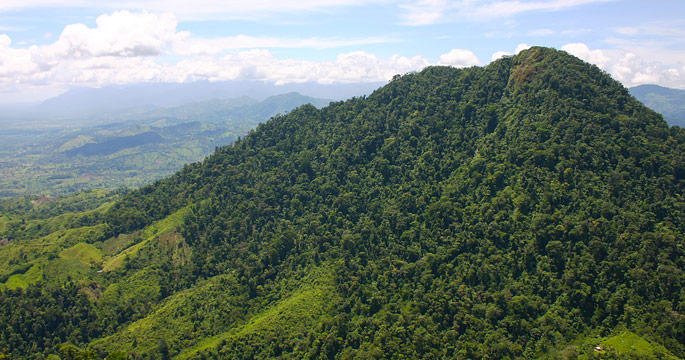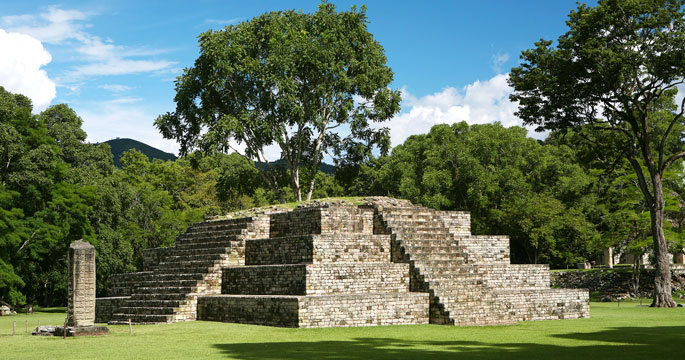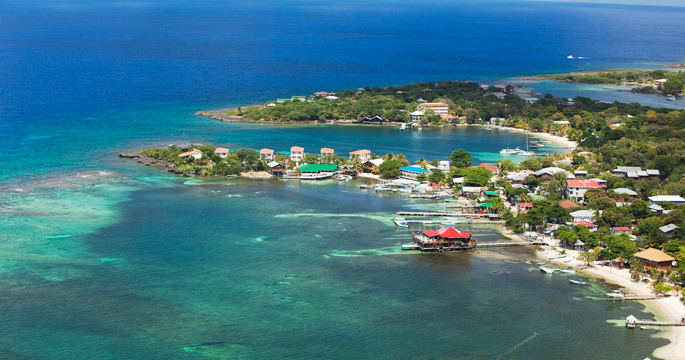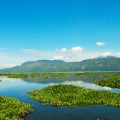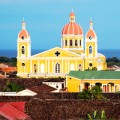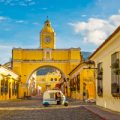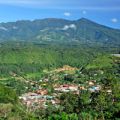A longtime favorite with scuba divers and beach-combing backpackers, Honduras is just beginning to hit the mainstream tourism radar. With hundreds of miles of undeveloped beaches, rich tropical forest preserves, wild rivers and verdant mountain slopes, the country is increasingly gaining the attention of the eco-travel crowd. In addition, a number of resort projects are underway along the coasts that promise to lure sunseekers to some of the Caribbean’s most pristine beaches. For these reasons and more, Honduras deserves a space in the vacation planner.
1 Island Styles
The Bay Islands—Roatán, Utila and Guanaja—lie some 20 miles off the Honduran mainland, and near the edge of the vast Mesoamerican Reef. They are the number one tourism destination in Honduras. Divers from around the world come for clear waters and pristine coral, but one doesn’t have to submerge to appreciate the area’s aquatic charms and beach culture vibe.
2 Stone Works
The remains of the historic Mayan city of Copan contains the finest and most complete collection of pre-Columbian sculptures, friezes and hieroglyphics ever discovered. Occupied for more than 2,000 years, this site is the most studied Mayan city in the world, and the leading tourism draw on the Honduran mainland. The nearby modern village of the same name offers lodging and numerous restaurants, and the area is well served by bus and taxi.
3 Green Spaces
Honduras is becoming Central America’s newest eco-tourism destination—and with good reason. Nearly one third of the country is encompassed in national parks, wildlife reserves or under some other form of protection. Together, these 91 protected areas are three-fourths the size of the entire country of Costa Rica, and include eight distinct biospheres ranging from coral reefs and coastal swamps to rainforests and mountain woodlands.
4 Coastal Charms
Tela Bay and its namesake coastal village have evolved from a historic port and railhead into the mainland’s leading beach destination. A five- mile crescent of sand accommodates a collection of waterfront resorts. Just to the west are the coves and lagoons of Punta Sal National Park, once the haunt of pirates, and now a haven for more than 350 species of birds. Also in the area, you’ll find the village of Miami, which is a center point of traditional Garifuna culture, and Lancetilla Botanical Garden, which is the second largest tropical botanical garden in the world.
5 Growing Concerns
Crops thrive in Honduras soil. Bananas, once the single largest factor in the country’s economy, are still an important export, but farmers have diversified. Rich varieties of coffee grow in the Comayagua Mountains, while pineapples, melons and a cornucopia of tropical fruits can be picked fresh from fields and groves. Restaurants through the country incorporate local ingredients into both traditional and international menus, while some of the freshest tastes come right from village markets and farms across the land.
6 The Next Place
Once the nation’s capital during Spanish Colonial times, the sleepy coastal town of Trujillo overlooks one of the country’s best beaches. The completion of a new pier and the arrival of the first small cruise ship in the spring of 2014 have the town poised for a new era of resort development. Currently these plans are sufficiently modest to ensure the destination retains its small-town appeal while providing better lodging and dining options.
7 Coffee Klatch
Volcanic soils and cool highlands provide ideal conditions for growing fine coffee, and Honduras is the America’s second largest producer of the bean. Coffee lovers can savor local artisanal blends or fully immerse themselves in the culture by visiting one of several farms that offer tastings, facility tours and hiking or horseback expeditions through the plantations and surrounding slopes.
8 Game Faces
Soccer is not just the primary sport of Honduras; it is a passion that permeates the culture, from the impromptu games played at village squares across the country to non-stop sports talk at local cafes and the international competitions staged at the Estadio Olimpico in San Pedro Sula. When the national team is playing, it is not uncommon for business to close early and workers to take the day off.
9 High Water
Ten-mile-long Lake Yojoa is a cool freshwater oasis sitting at an elevation of 2,000 feet in the country’s central highlands. Surrounded by the wooded slopes of volcanic peaks, it’s a haven for bird life and a favorite with fishermen. A signature dish at many of the small shoreside restaurants is fried bass pulled fresh from the lake.
10 The Other Side
Honduras meets two oceans, but only a small fraction of its 560 miles of coastline lie on the Pacific side. Mangrove lowlands dominate much of this region, with a 20-mile canal cut through the greenery to connect the port city of San Lorenzo to the Gulf of Fonseca. This small city, dating back to the 16th century, serves as a staging point for tours into the wetlands and excursions to volcanic Amapala Island, which rises more than 2,500 feet from the surrounding waters and is ringed by black sand beaches.

